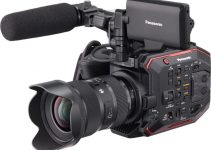Any filmmaker will tell you that when it comes to shooting video, the quality of your audio is just as important as the visuals. That being said, many productions tend to feel very one-dimensional due to the lack of proper audio mixing and sound design.
So, if you’re someone looking to make your film more cinematic, professional sound mixer Andrew Jones goes over four simple, yet effective tips and tricks you can use to enhance the auditory experience of your videos.
One way you can achieve a more cinematic feel to your film’s audio is through the use of sound effects. While some filmmakers tend to underestimate the use of these tools, sound effects allow you to create a textured environment that helps shape your scene.
For instance, you could make a rather calm environment seem busy by adding sounds of cars whizzing by and people having conversations. If you wanted to, you can do the opposite and make a busy setting seem quiet by omitting audio elements.
If you’re planning on adding specific sound effects to your scene, try recording wild sound while on set. That’s basically the process of recording foley elements with the added bonus of capturing audio that belongs in your particular environment. Even if the recording isn’t perfect, you can always refer back to the wild sound to understand how to mix your audio elements into the scene.
Another technique you can use to create a more immersive audio experience is by taking boom perspective into consideration. This means that when you’re recording dialogue, the distance of your microphone should match the distance of your camera.
For example, when you’re shooting a wide-shot, your microphone should be placed at a similar distance. Doing this helps your sounds feel like they belong in your particular scene, rather than unintentionally stand out from the picture.
The last piece of advice given by Jones is to capture clean dialogue. Even if you’re script calls for a rapidly-paced argument full of cross-talking, it’s essential to record the lines of each actor individually, rather than having your actors overlap in one recording. Although this process may take extra time in production, having a clean take of each actor’s dialogue allows you to alter the pace of your scene in post, helping you fine-tune just how fast or slow the story unfolds.
The importance of audio is often understated in the minds of beginner filmmakers. Proper sound design, however, can drastically affect the audience’s viewing experience, helping you create a level of immersion that allows viewers to feel as if they’re in the story. While the tips outlined above may seem very simple, using those tricks will go a long way in helping set the stage for your scene, at least from an audio standpoint.
[source: Aputure]
Disclaimer: As an Amazon Associate partner and participant in B&H and Adorama Affiliate programmes, we earn a small comission from each purchase made through the affiliate links listed above at no additional cost to you.



